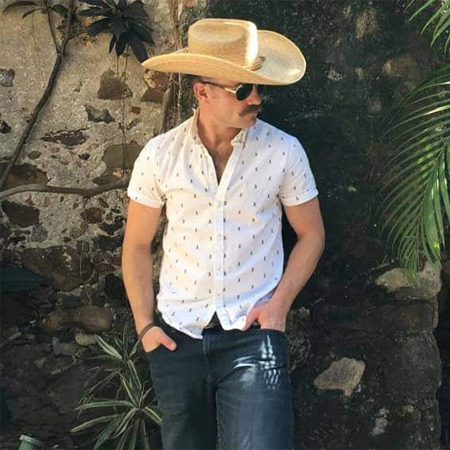“Do you sell ginger?” we’ve often been asked. Staying true to our mandate to only provide local food in our market is certainly a challenge and we frequently find ourselves turning down customer requests for the foreign foods they’ve become accustomed to purchasing at the supermarket: “Where’s the turmeric?” and “Why don’t you sell lemons?”
Some days I wonder if our unwavering commitment to local food is worth it. Wouldn’t we increase customer traffic and satisfaction and be more profitable if we also stocked our shelves with foods that are not readily available in this region?
And why not sell Mexican-grown strawberries in February? Certainly, the consumer would understand and perhaps even appreciate a more compromising view on what it means to operate as a local farm market.
These sentiments seem to grow even stronger through the winter as our store’s selection is reduced to storage root crops, apples, pears and a variety of winter-hardy greens. And yet, there are many reasons why I’ve become more steadfast in our pledge to solely provide regionally-grown fruits, vegetables, dairy and meat products in our market.
It’s been demonstrated that the few dollars consumers spend weekly at the local farmers market or neighbouring artisanal food shop provides a lasting benefit for the community. Imagine then if we succeeded in weaning ourselves entirely from the industrial food system and solely relied on locally-sourced food. Our bodily health would not only improve but we’d also bring greater vitality to our economy. Money would circle endlessly within our own community. Value-added enterprises would sprout up everywhere.

Also, a short food chain between producer and eater would foster a stronger sense of neighbourliness in our towns as people become more dependent on each other for their basic needs.
Further, by shutting our doors to imported foods, we provide tremendous incentive for agripreneurial-minded farmers to diversify into foods they might otherwise not even attempt to grow in our region. This has been the immediate response here at our farm as we strive for greater food security in our city.
A few years back we asked ourselves if we could profitably grow ginger on our farm with low input costs, minimal risk and without adding significantly to our ever-increasing workload here on our intensive mixed-vegetable farm. We decided to try. Here’s our journey.
Our immediate task was to find a quality source of ginger rhizomes for seed. Unfortunately, we were too late in the season and our quest to find certified seed was fruitless.
Uncertain if it would grow, we decided to buy organic Peruvian-grown ginger from a local farm market. For subsequent crops, we decided we would save our own seed or get in the queue at a reputable seed supplier a little earlier. We’ve heard people say that store-bought ginger is treated to inhibit sprouting. Fortunately, all the ginger we purchased was viable.
Early in the year, in plastic bulb crates we alternated between a one inch layer of potting soil and a layer of firm rhizomes packed tightly together. Larger rhizomes were broken into smaller chunks but with the assurance that every piece contained at least one or two buds. Soil was kept moist during the entire sprouting period and the temperature was kept at 25°C.

By March, green shoots began to emerge so we planted the ginger on a one foot grid in fertile soil inside a heated greenhouse. We mulched it with aged compost from our farm.
The ginger grew extremely slow until late June when it suddenly exploded with new shoots and rapid growth. Throughout the summer the greenhouse temperature exceeded 40°C during the day and never dipped below 20°C at night. Intense heat, long days, high humidity and ample water produced sturdy stems with dark green fronds that reached a height of 1.5 meters by mid-August.
In early September, we began harvesting fresh ginger for our market. It pulled up easily and we were pleased to find a ten-fold yield relative to the amount planted. Some of the ginger would remain in the ground until late November to be used after curing as seed for the following season.
The ginger sold well and our customers were ecstatic. So were we. We had succeeded in growing a crop that demanded very little care and yet provided a good return. Customers could now spice their dishes with fresh ginger grown in fertile, organic soil and pay only a fraction more than they would pay for store-bought, organic ginger.
Consumer demand for fresh foods grown close to home, coupled with our conviction that the only way to attain food security is by shutting our doors to foreign foods, will encourage further innovation on our farm and other farms in our region.

Increasing biodiversity on our farm by introducing new crops makes ecological sense and increases the viability of our farm business as we respond to consumer demands. This might be reason enough to attempt growing other foreign foods in our region.
But there’s more. Because who can place a value on the smile of a satisfied customer who shares your vision for a food-secure community where every citizen has year-round access to quality foods produced on our own soil?
Video: Growing Ginger in Containers in a Greenhouse (11:22)
Learn how to achieve food self-sufficiency, build soil fertility and grow an abundance of nutrient dense food year-round.
Access personal Q&A support with Dan (market gardener) and Jack (edible landscape designer) to answer any of your growing questions through our members’ discussion forum and live Zoom meeting webinars (March-Oct).
Access a fresh stream of seasonally adapted video releases as the growing season progresses (we’re located in the Pacific Northwest).







